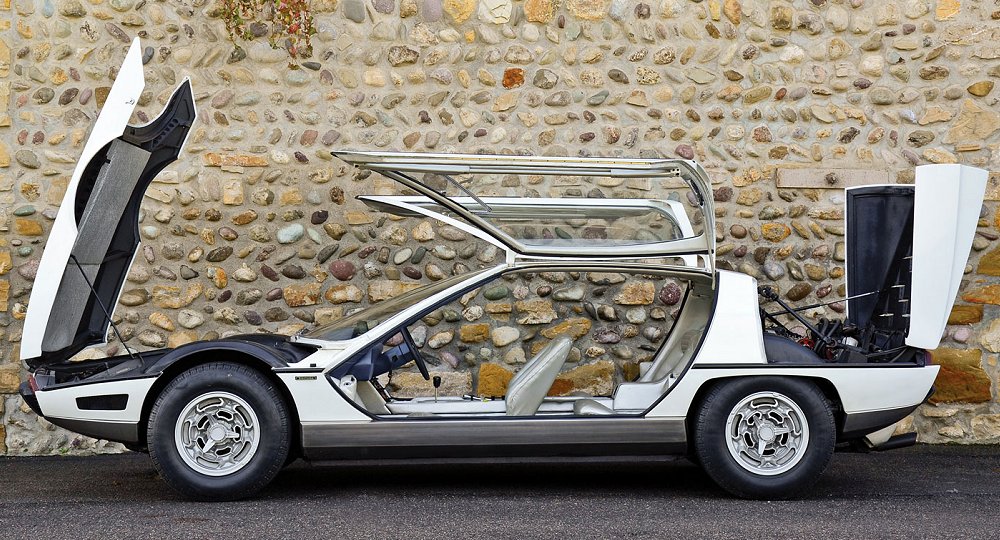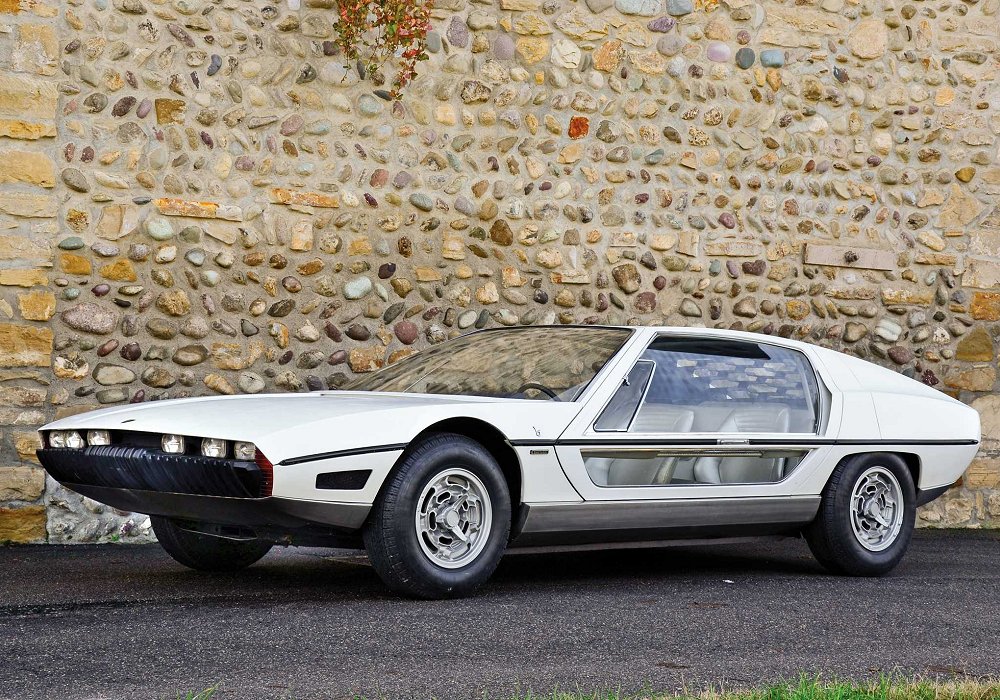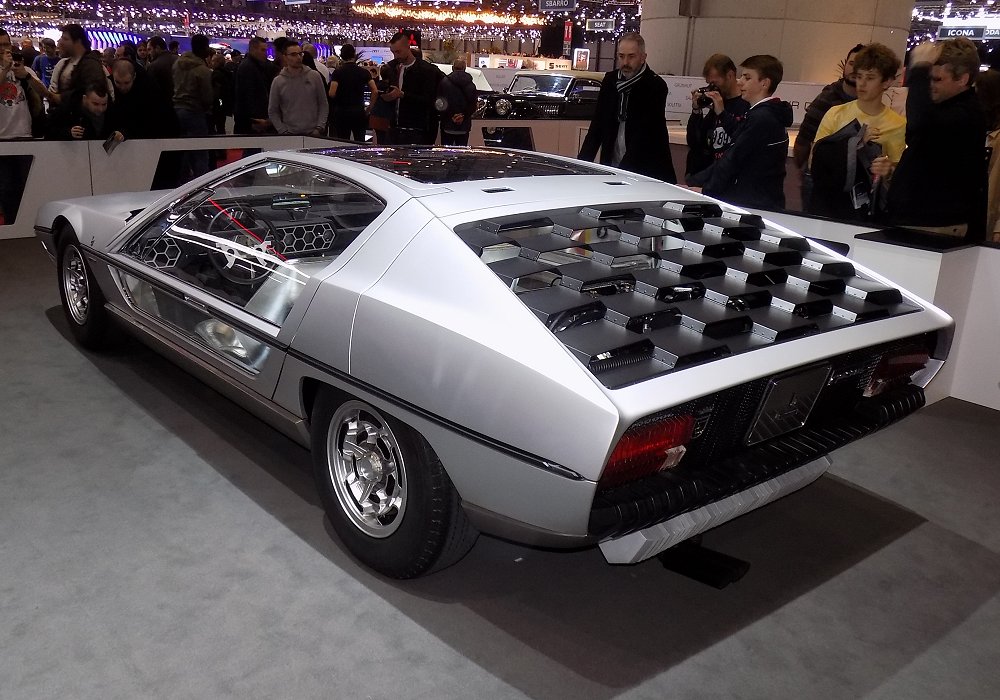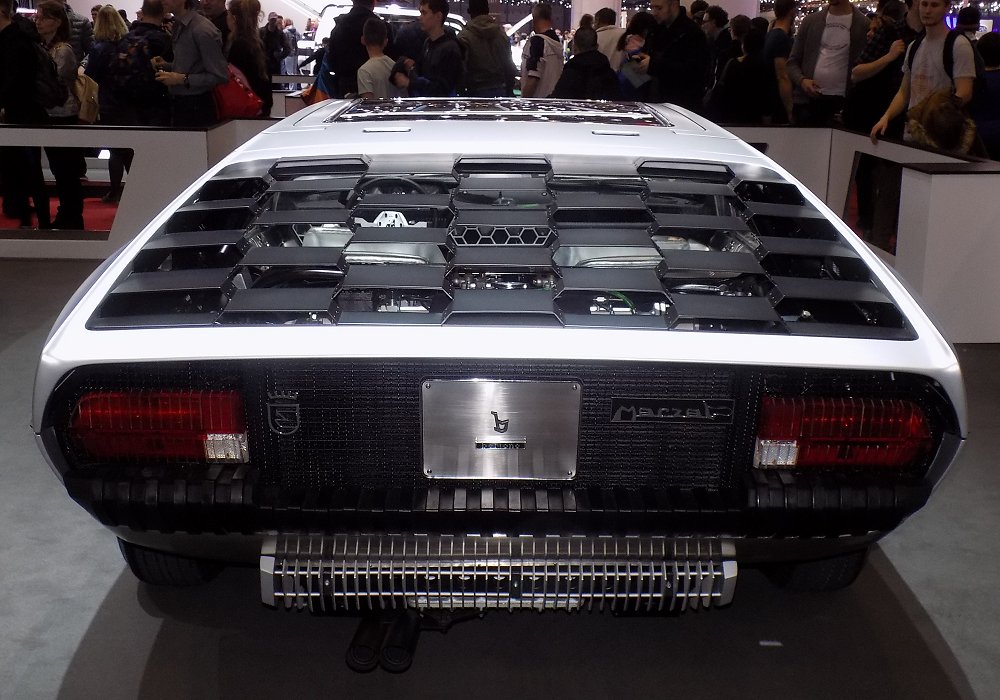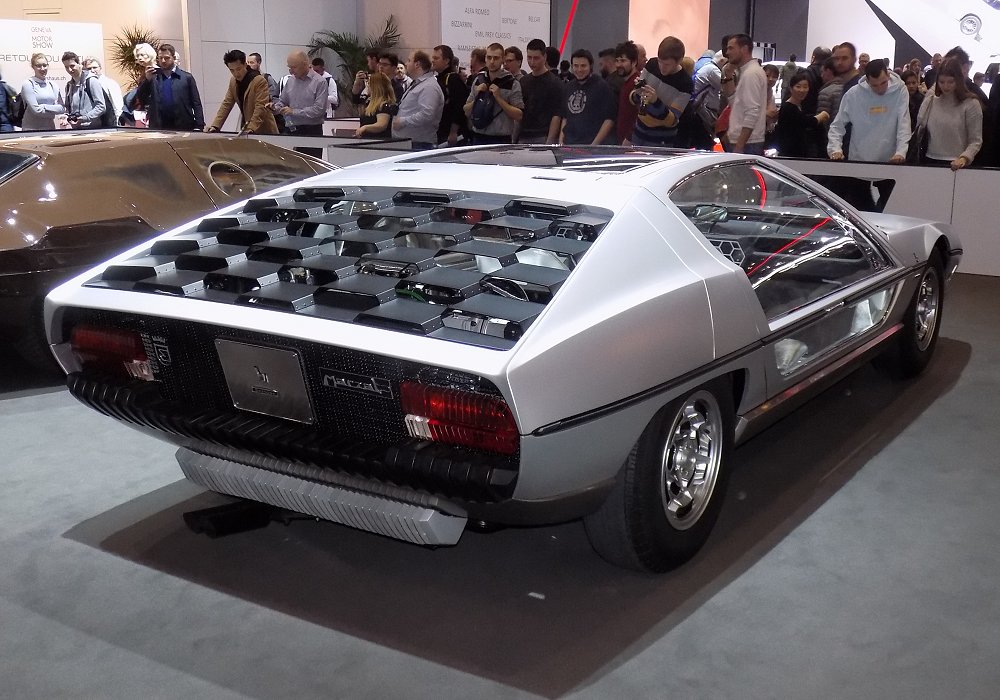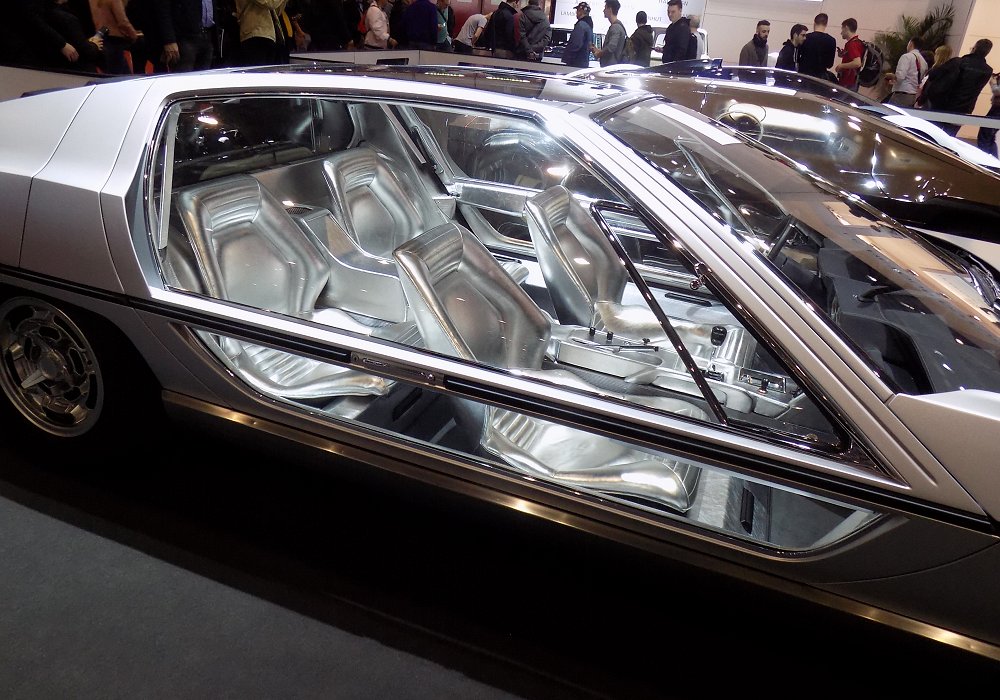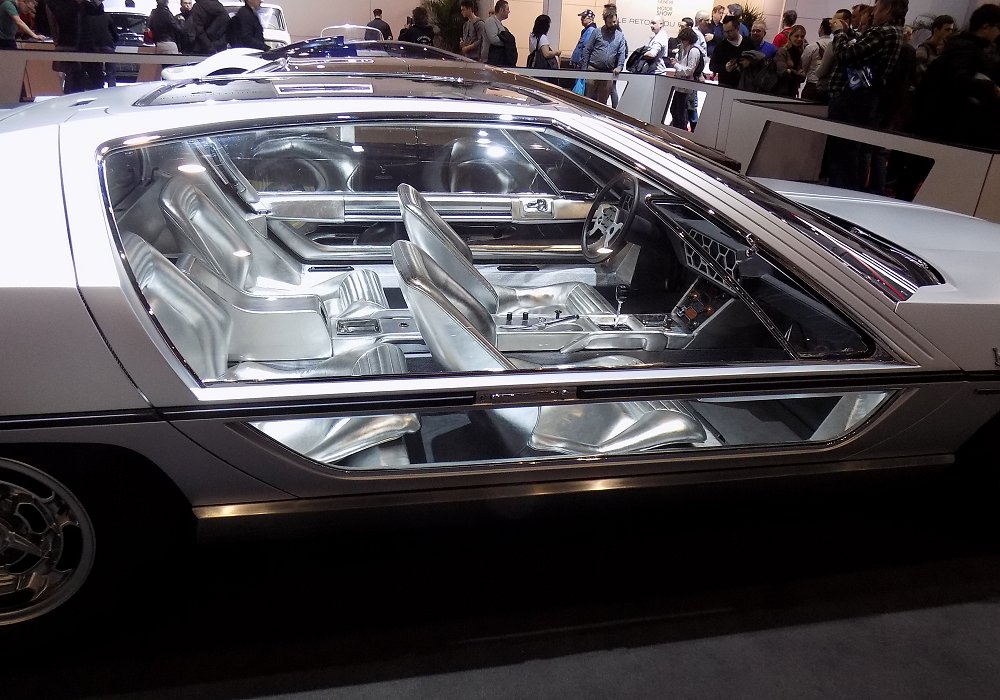Description
The Lamborghini Marzal Bertone TP 200, unveiled in 1967 at the Geneva Motor Show, was one of the most striking and visionary concept cars of the 1960s—a futuristic four-seater grand tourer that redefined what a Lamborghini could look like. Designed by Marcello Gandini at Carrozzeria Bertone, the Marzal was conceived as a showcase of innovation and style, combining radical design, engineering experimentation, and bold transparency. Though it never entered production, the Marzal became one of the most influential concept cars of its time, directly shaping the future of Lamborghini’s design language and inspiring the iconic Lamborghini Espada that followed.
The Marzal was born from Ferruccio Lamborghini’s desire to expand the brand beyond pure two-seater sports cars and into the realm of refined grand tourers. By the mid-1960s, Lamborghini had already established its reputation with the 350 GT and Miura, but the Marzal was intended to demonstrate how the company could combine performance with luxury and practicality. Working closely with Gandini, Ferruccio encouraged a design that would be unmistakably Lamborghini yet unlike anything the world had seen.
The result was a breathtaking six-window coupe that looked more like a spacecraft than a road car. The Marzal’s most distinctive feature was its vast use of glass: nearly the entire upper body, including the enormous gullwing doors, was transparent. The silver hexagonal theme that dominated the design—visible in the honeycomb pattern of the glass, the interior textures, and even the shape of the rear louvres—gave the car a unified futuristic aesthetic. The doors stretched from the floor to the roof, offering spectacular visibility and easy access to the interior. The proportions were sleek and elongated, with a long wheelbase and a low, tapering rear deck that hinted at Lamborghini’s continuing obsession with aerodynamic form.
Powering the Marzal was an experimental drivetrain derived from the Miura’s 3.9-litre V12 but cut in half to create a 2.0-litre inline-six. This engine, mounted transversely behind the rear seats, produced approximately 175 horsepower at 6,800 rpm and drove the rear wheels through a five-speed manual transmission. While modest in comparison to the Miura’s output, it was more than sufficient for a concept car, and it provided smooth, refined power delivery suited to the Marzal’s grand touring aspirations. The chassis was based on a modified Miura frame, shortened and reinforced to accommodate the larger cabin and unique proportions.
The interior was every bit as daring as the exterior. Gandini filled the cabin with light silver upholstery, hexagonal-patterned seats, and futuristic detailing that echoed the car’s geometric exterior motifs. The dashboard featured hexagonal gauges set into a minimalist aluminium panel, while the steering wheel and gear lever carried the same polished metallic theme. The cabin was designed for four adults, with ample legroom and panoramic visibility that made the car feel like a glass capsule. Even by concept car standards, the interior was avant-garde, combining art, architecture, and automotive design in a single cohesive statement.
The Marzal’s debut at the 1967 Geneva Motor Show caused a sensation. It was unlike anything else on display—more a vision of the future than a conventional automobile. The car’s striking appearance, especially its transparent doors and silver-on-silver color scheme, captured the imagination of designers and enthusiasts alike. It later gained further fame when Prince Rainier III of Monaco drove it, accompanied by Princess Grace, on the opening lap of the 1967 Monaco Grand Prix—a moment that cemented the Marzal’s place in automotive legend.
Although the Marzal never reached production, it served as the conceptual foundation for the Lamborghini Espada, which debuted a year later in 1968. Many of the Marzal’s ideas—the long, low silhouette, the emphasis on visibility, and the geometric motifs—were carried into the Espada’s design, albeit in a more practical and less radical form. The Marzal’s influence extended beyond Lamborghini, inspiring generations of car designers to experiment with glass, symmetry, and proportion in new ways.
Technically, the Marzal was more a design study than a fully functional prototype, but it was drivable and mechanically complete—a testament to Bertone’s craftsmanship and Lamborghini’s engineering expertise. The car remained a one-off, preserved for decades before being restored to full condition in the 1990s. Today, it resides as part of the Bertone collection, occasionally appearing at concours events and design exhibitions as a reminder of the audacious creativity of the 1960s Italian automotive industry.
The Lamborghini Marzal Bertone TP 200 stands as one of the most important concept cars ever created—not only for its breathtaking aesthetics but for the ideas it introduced. It showcased Lamborghini’s willingness to challenge conventions and reimagine the boundaries between art and engineering. The Marzal was not just a glimpse of what could be; it was a declaration that automotive design could be visionary, architectural, and poetic all at once. Even now, over half a century later, it remains a masterpiece of form and imagination—a symbol of a time when Lamborghini dared to dream without limits.

